This post may contain affiliate links. Please read our disclosure policy.
This homemade gluten free mac and cheese recipe has a beautiful, rich cheese sauce.
And it's made on the stovetop, so there's no oven required. It only takes about 20 minutes from start to finish!

my take
Nicole's Recipe Notes
This rich, thick mac and cheese is packed with cheddar cheese flavor and still smooth and creamy. The cheese sauce is made partially with evaporated milk, so it takes much less time to thicken.
Dried gluten free pasta has something of a bad reputation for being soggy and falling apart, but I've found the perfect gluten free elbow noodles that don't get soggy. It's an Italian brand called Rummo.
You can even make the pasta ahead of time and store it at room temperature for a couple of hours. All that's left is to make the quick cheese sauce on the stovetop, and dinner is served!
For comfort food mid-week meals, special occasions, or because you need a snack, this easy recipe is always at your fingertips.
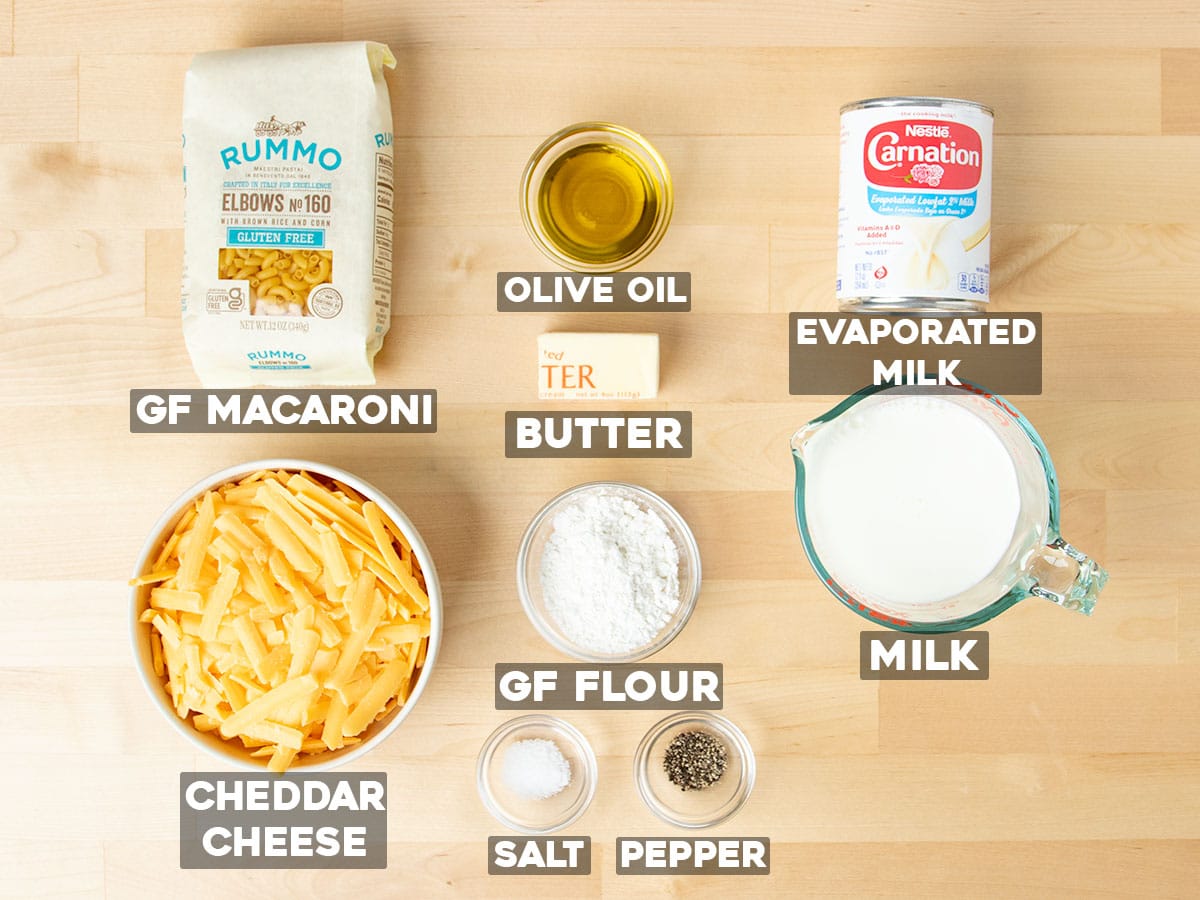
what's in it
Recipe Ingredients
- Gluten fee pasta: You can make this dish with any small dried pasta, but I like macaroni noodles best.
- Olive oil: Tossing the cooked pasta with oil keeps it from sticking together.
- Butter: Melted butter adds flavor and makes the roux mixture smooth.
- Gluten free flour: Thickens the cheese sauce when you cook it with butter. Be sure to use something without any xanthan gum or your sauce will be lumpy and too thick.
- Milk: Adds liquid, flavor and richness to the cheese sauce.
- Evaporated milk: Has less moisture than regular milk, so the sauce gets thicker more quickly
- Shredded cheese: A semi-hard cheese with lots of flavor, like cheddar, is best. Pre-shredded cheese is fine but you may need to add more milk or reserved pasta water to thin the sauce.
- Salt and pepper: Brings out the other flavors and brightens the dish; add to taste.
How to make gluten free mac and cheese
Follow along with my easy instructions below to see how to make gluten free mac and cheese in your own kitchen.
Cook the pasta first
- Cook the pasta in a large pot to an “al dente” texture according to the instructions on the package;
- Drain the pasta and reserve some of the pasta water
- Toss the cooked and drained pasta with olive oil and set it aside
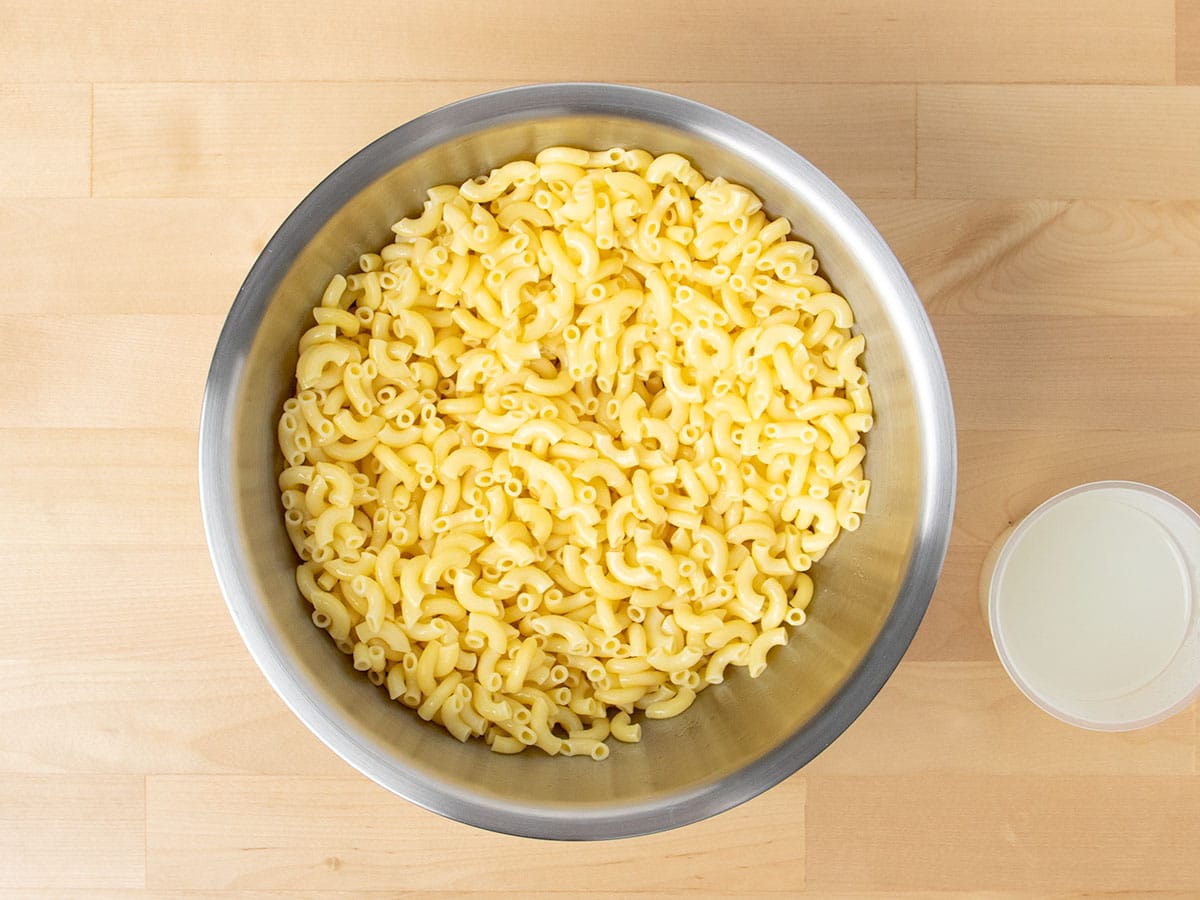
Make a roux and add milk
- Melt unsalted butter over medium heat
- Add gluten free flour to the butter, whisk, and simmer
- Whisk in evaporated milk
- Whisk in regular milk
- Cook until the sauce thickens and coats the back of a spoon
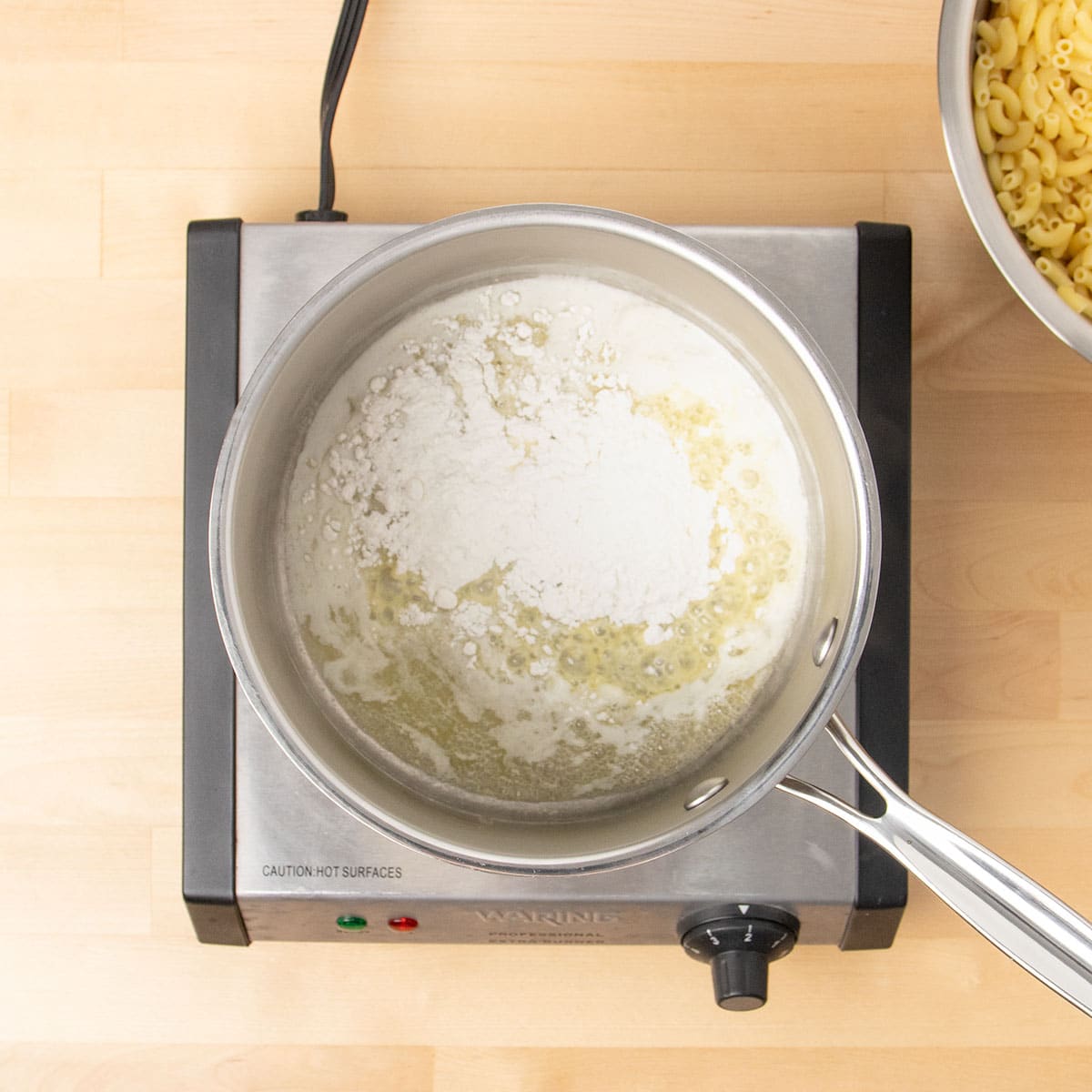
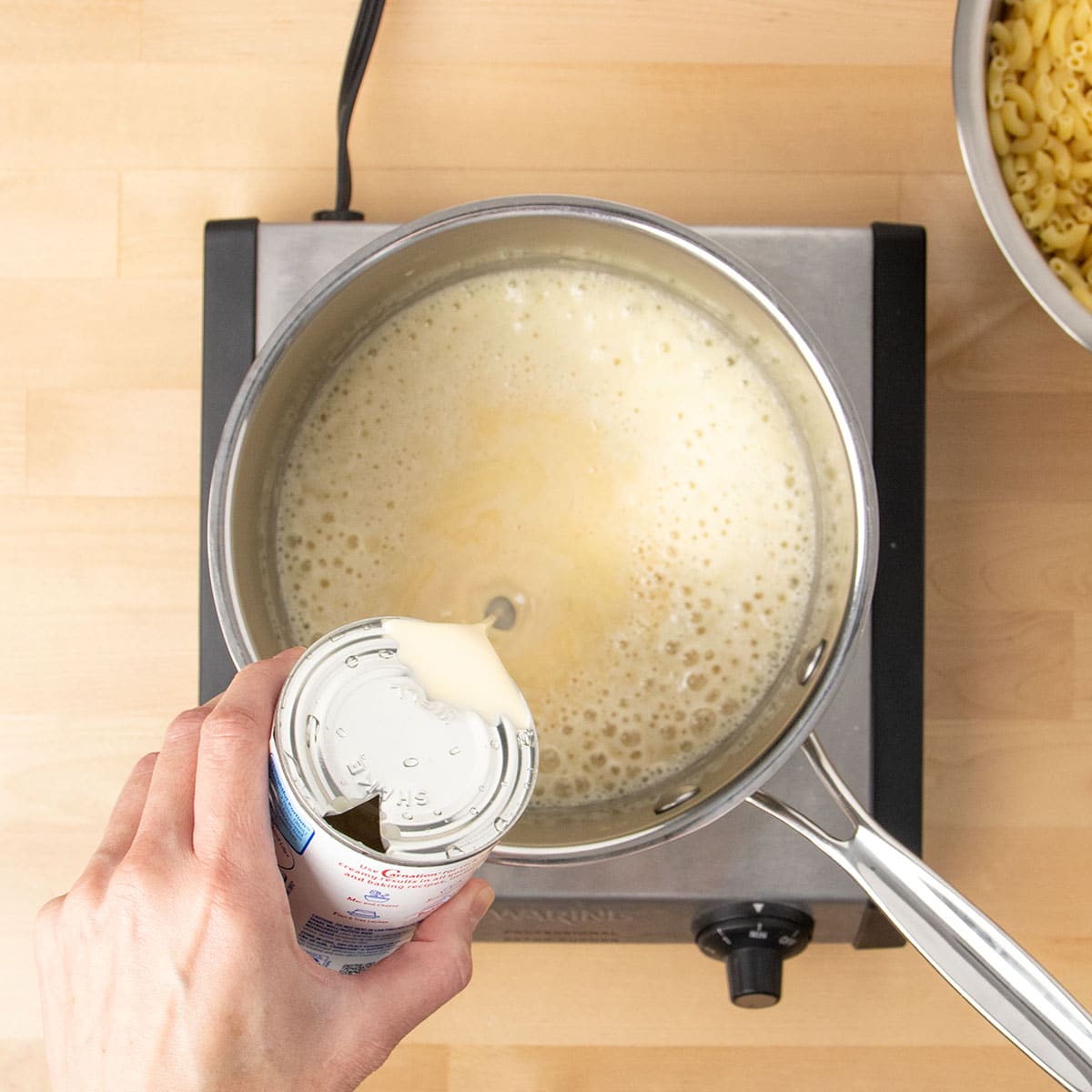
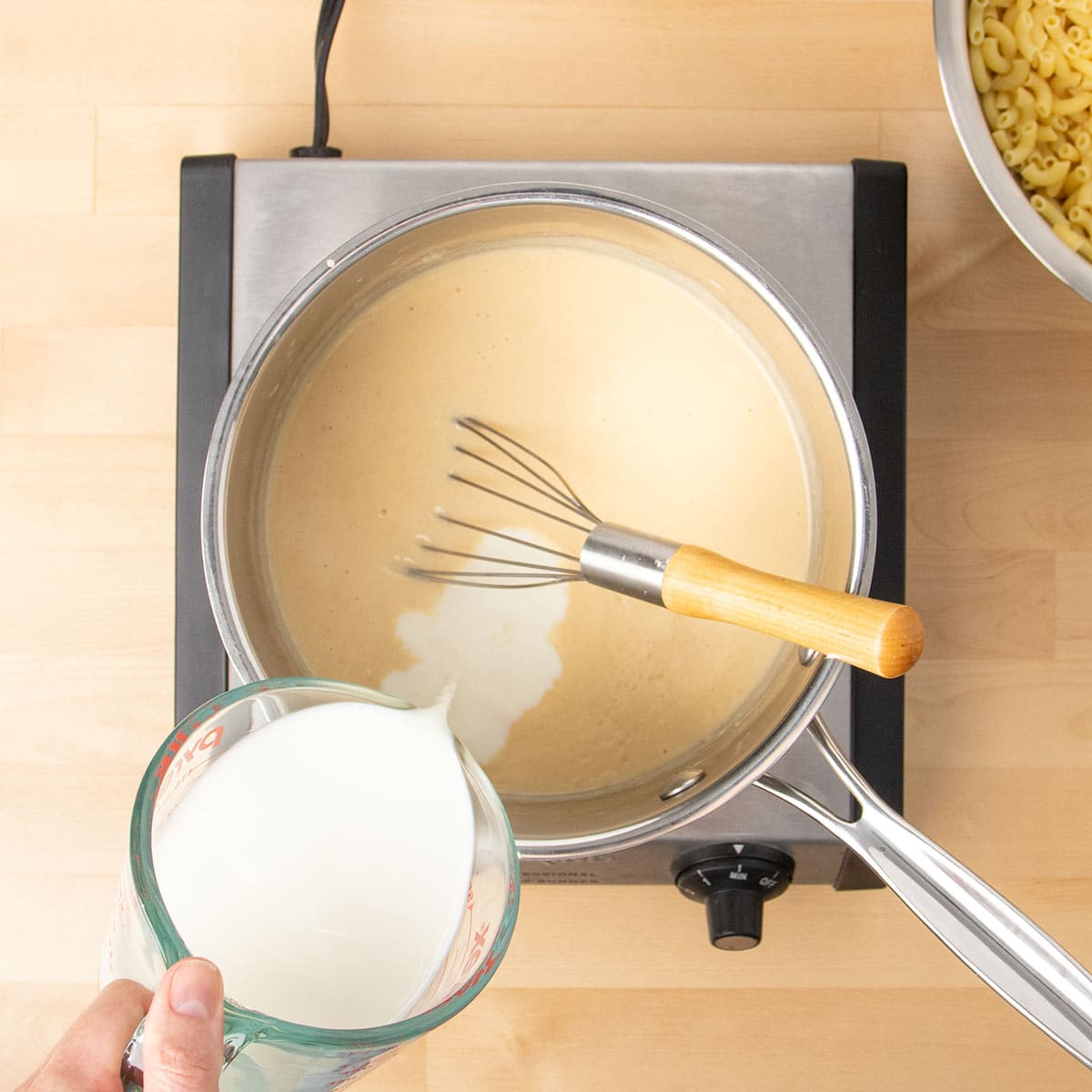
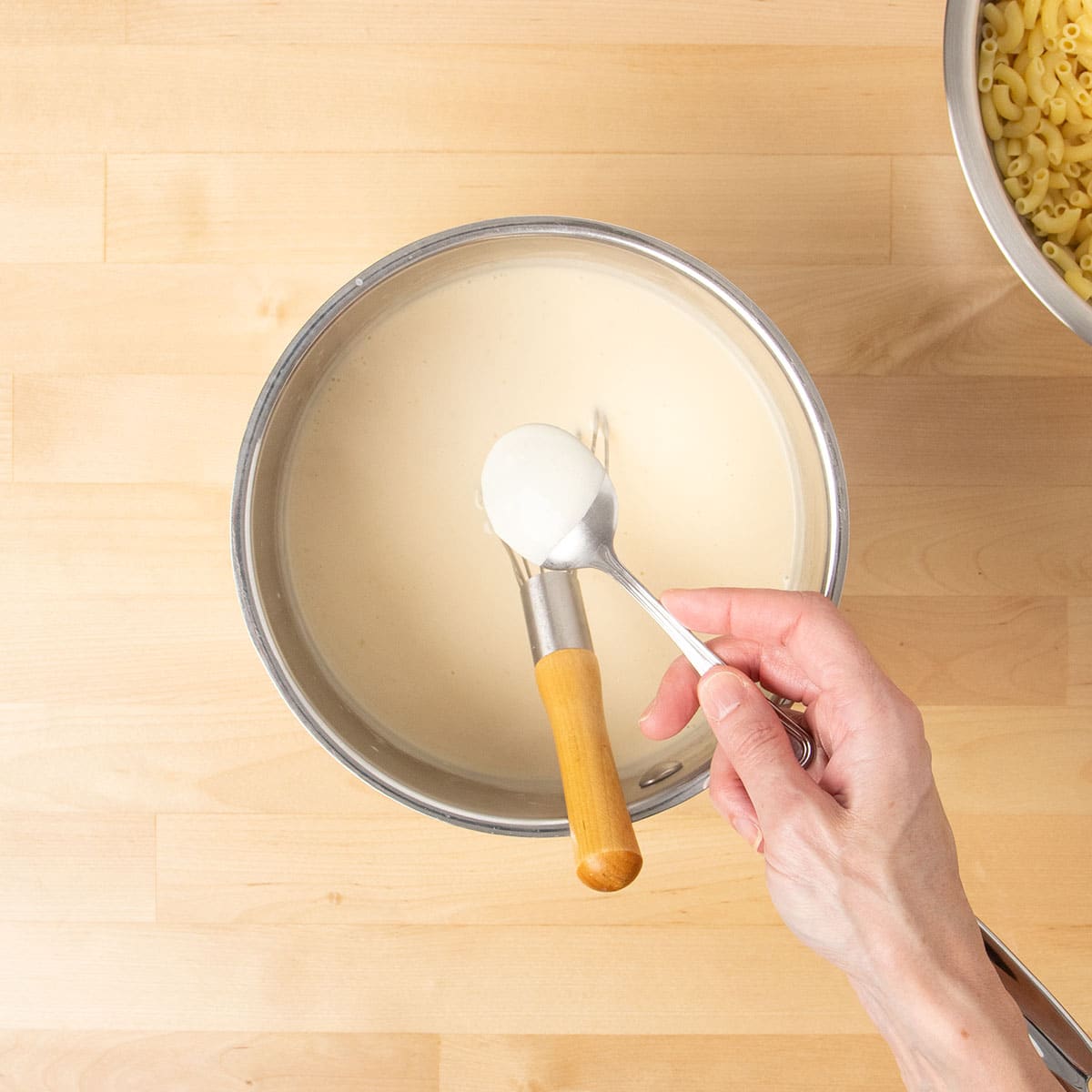
Add shredded cheese to complete sauce
- Remove the pan from the heat, and mix in shredded cheddar cheese until the cheese melts. Sharp cheddar cheese tastes best, but any will do.
- Add more milk or some pasta water to thin the sauce if you prefer it thinner
- Pour the cheese sauce over the cooked pasta, and mix gently to combine
- Serve warm

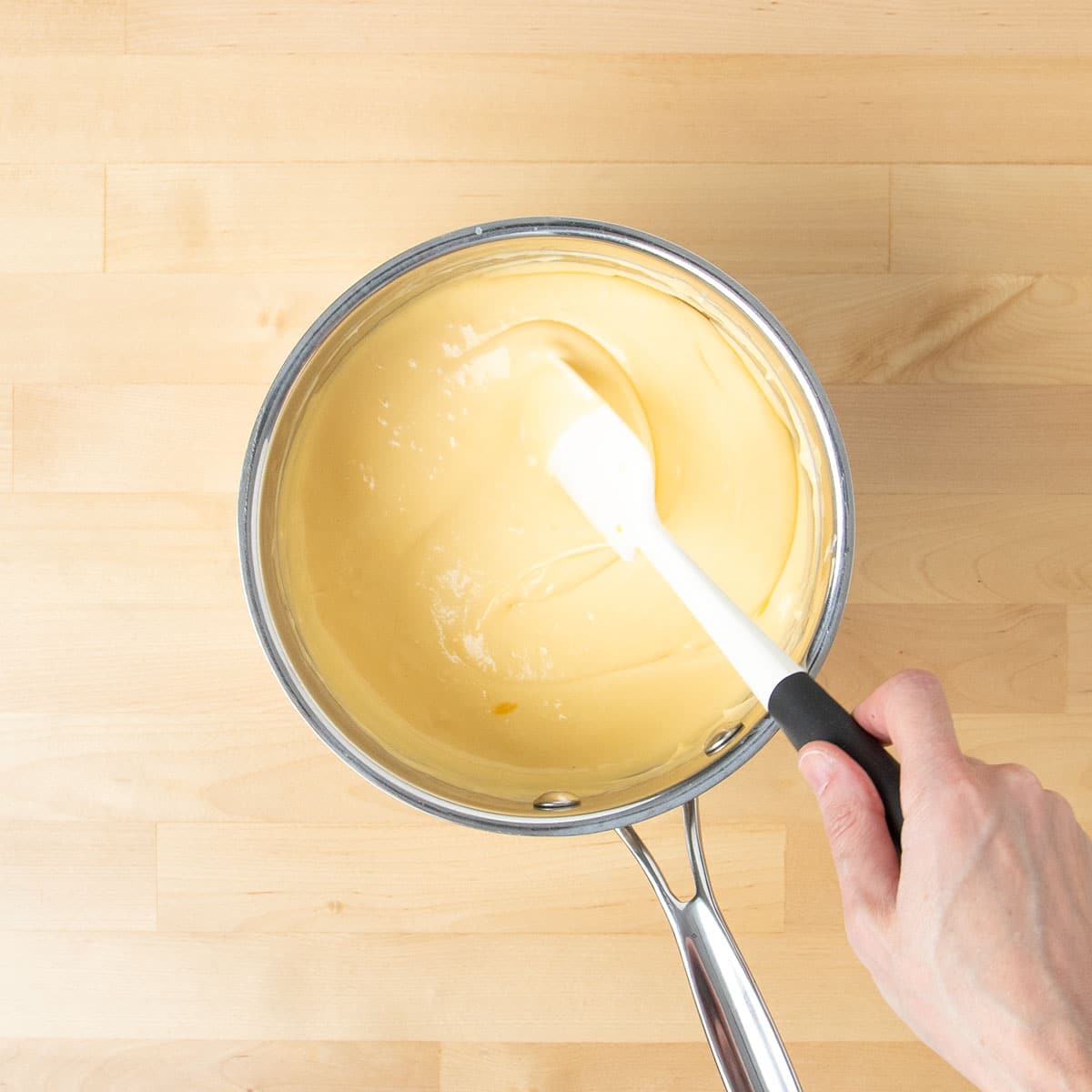
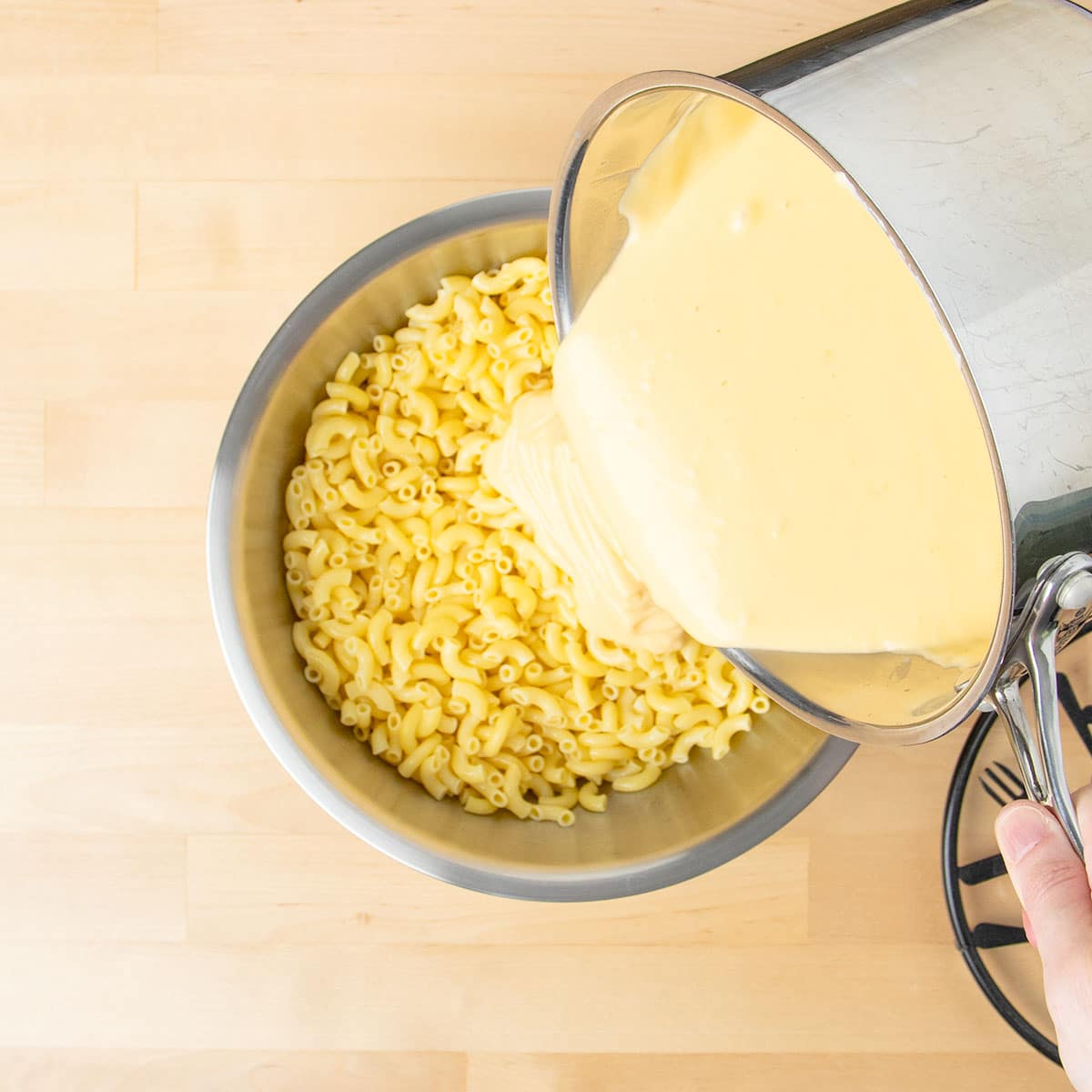
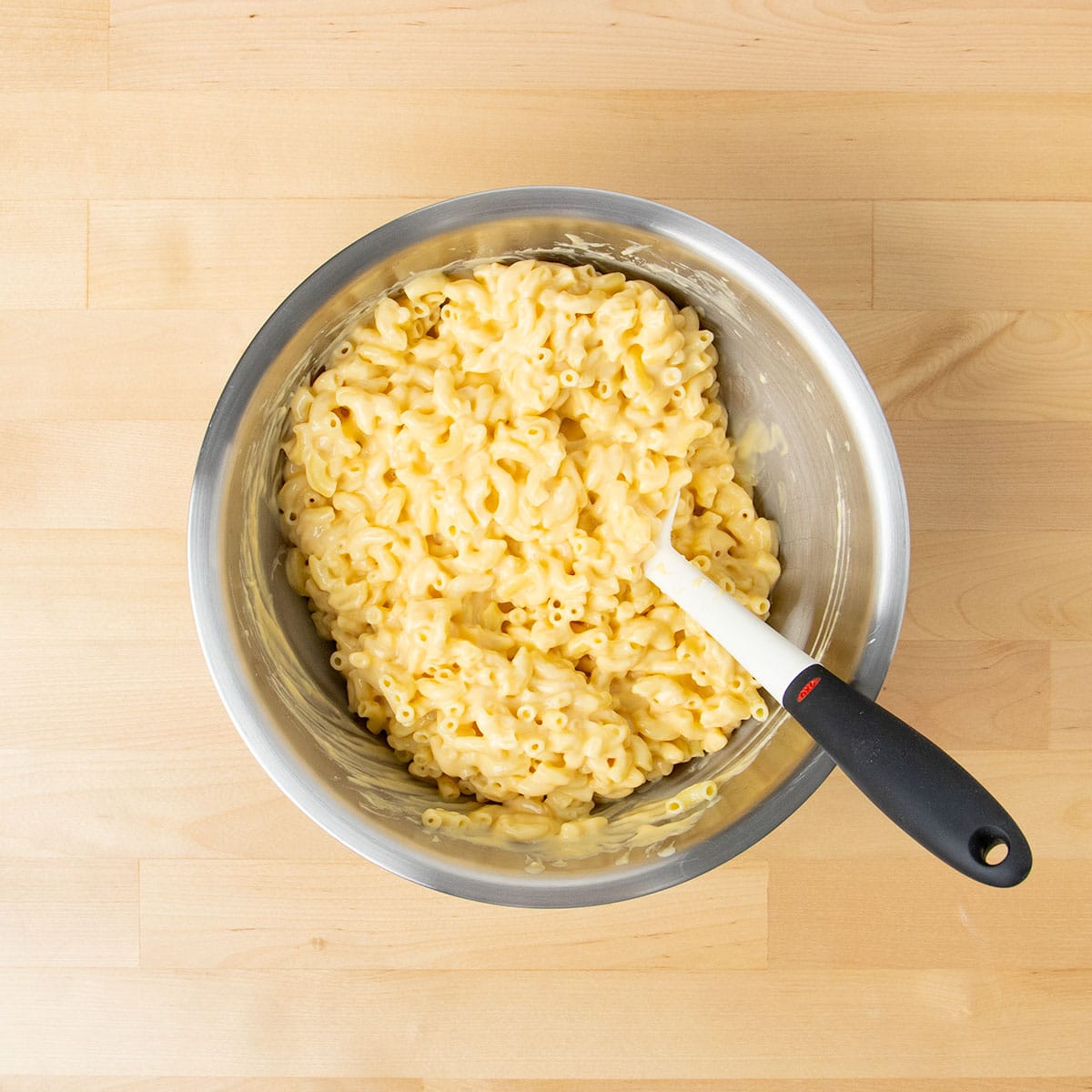
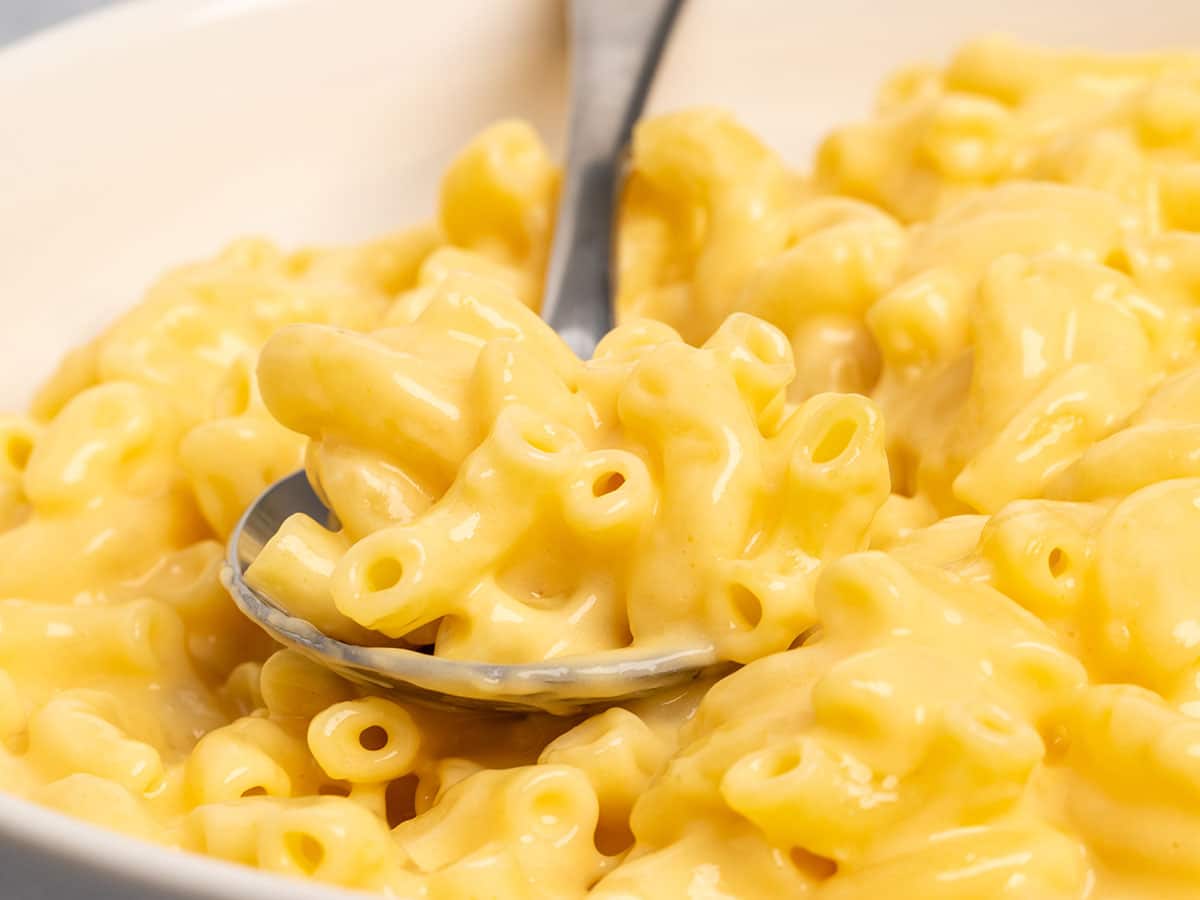
My Pro Tip
Expert Tips
Choose your pasta carefully
Not all dried pastas are created equal, but so many of them are available today and the best of them really are excellent. My current favorite brand of GF macaroni is Rummo brand, which you can find for sale online (look for sales!). It actually cooks al dente and isn't hard even when it's cold.
Bionaturae also makes a great gluten free pasta, and its sister brand Jovial gluten free brown rice pasta is good, too. Barilla gluten free macaroni noodles also works, but is just much more fragile.
Salt the water
If you're the kind of person who tends to salt at the table, skip that step by salting your pot of boiling water instead. The pasta will absorb some of the salt as it cooks, resulting in a more complex flavor.
Tend to the macaroni
Gluten free pasta tends to be sticky, so you have to be diligent while it's boiling to ensure you don't end up with big clumps. As soon as you drop the pasta into the water, start stirring and continue to stir every few seconds to keep those noodles from sticking together.
Rinse the boiled pasta
Straining gluten free macaroni isn't the last step in the cooking process. If you strain and walk away, trapped heat will continue to cook the pasta. To keep prevent ending up with mushy macaroni, rinse it with lukewarm water, then drain again.

substitutions
Ingredients and substitutions
Dairy free
I'd recommend trying our recipe for dairy free mac and cheese instead of using this recipe as a base. To make this recipe dairy free, here are the substitutions I would try:
- For the evaporated milk: evaporated unsweetened coconut milk or oat milk; also try dairy-free half and half
- For the milk: unsweetened, unflavored Ripple milk, almond milk or coconut milk (from the carton)
- For the shredded cheese: Violife, Daiya or Miyoko's Creamy shredded dairy free cheddar-style cheese
- For the butter: Miyoko's Creamery or Melt brand vegan butter
Unfortunately, the dehydrated cheese, “almost instant” cheese sauce can't be made dairy free.
Cheddar cheese
I like cheddar cheese best, but you can replace it with any semi-hard cheese with some real flavor. Try Gouda, Muenster, Monterey jack, or a mixture. The Unexpected Cheddar from Trader Joe's is also great, as it's cheddar with some parmesan cheese added.
Evaporated milk
If you can have dairy but you don't have evaporated milk, try replacing it with an equal amount of half-and-half. Or, you can make your own half and half by combining 3/4 cup regular milk with 3/4 cup heavy whipping cream.
Additions and variations
To create a more complete meal, mix in some vegetables like peas, corn, or small broccoli crowns, or proteins like chopped ham or cooked ground beef.
For a little more complex flavor, you can also add a dash of garlic powder, mustard powder, or chili powder to the cheese sauce before you add the cooked macaroni. Try adding some toasted gluten free breadcrumbs on top right before serving.
Whether you serve it plain or with additions, this dish is so versatile that you can serve it instead of or along with gluten free creamed corn for Thanksgiving.

Gluten Free Mac and Cheese Recipe
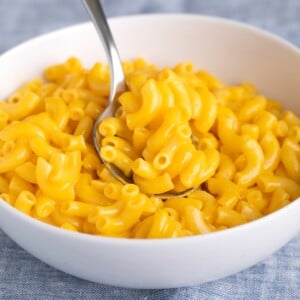
Ingredients
- 12 ounces dried gluten free elbow noodles, I like Rummo brand GF elbow macaroni
- 1 ¼ tablespoons (18 g) extra virgin olive oil
- 4 tablespoons (56 g) unsalted butter, chopped
- ¼ cup (35 g) gum free gluten free flour blend, (See Recipe Notes)
- 12 fluid ounces evaporated milk, at room temperature
- 1 ½ cups (12 fluid ounces) (regular) milk, plus more as necessary, at room temperature
- 3 cups (12 ounces) cheddar cheese, shredded
- ½ teaspoon kosher salt, or to taste
- ¼ teaspoon freshly ground black pepper, or to taste
Instructions
Prepare the pasta
- Boil the pasta in a large pasta pot to an al dente texture, according to the package directions.
- Drain the pasta, reserving about 1 cup of the hot pasta water in a heat-safe container.
- Rinse the drained pasta with warm water, and drain it again.
- Return the cooked pasta to the pasta pot or to a large mixing bowl, and toss it with olive oil to prevent it from sticking together.
- Cover the pasta pot or bowl, and set it aside.
Make ahead option
- You can place the cooked pasta in a large bowl, cover it with plastic wrap and leave it out at room temperature for up to 8 hours before proceeding with the recipe.
Make the cheese sauce (see recipe notes for alternative sauce)
- In a medium-sized, heavy-bottom saucepan, place the butter and cook over medium heat until it’s just melted.
- Add the flour blend and whisk to combine well. The mixture will clump at first, and then smooth out.
- Cook the butter and flour mixture over medium heat, stirring constantly, until it has just begun to turn a very light brown color (about 2 minutes).
- Add the evaporated milk to the roux very slowly, stirring constantly to break up any lumps that might form.
- Add 1 1/2 cups of regular milk, and whisk to combine well.
- Bring the mixture to a simmer, still over medium heat.
- Continue to cook, whisking occasionally, until thickened and reduced by about one-quarter (about 7 minutes).
- When it's ready, the sauce should coat the back of a spoon and be thickly pourable. If it seems too thick to pour, whisk in a little bit more milk or some of the reserved pasta water to loosen it up a bit. If it's too thin, allow it simmer for a bit longer.
- Remove the saucepan from the heat and place it on a heat-safe surface.
- Add the grated cheese and mix to combine with a silicone spatula or wooden spoon until the cheese is fully melted.
- Add salt and pepper to taste, and add more milk or reserved pasta water a bit at a time if you prefer a thinner cheese sauce.
Finish the dish
- Pour the hot cheese sauce over the cooked pasta in the pot, and fold the pasta carefully into the sauce using a silicone spatula.
- Turn it over gently, to avoid breaking the pasta, until all of the pasta is coated in the sauce.
- Serve immediately.
Video
Notes
- 12 ounces gluten free elbow macaroni prepared as described above
- 3/4 cup (6 fluid ounces) milk
- 3/4 cup (84 grams) dehydrated cheddar cheese powder
- 7 tablespoons (98 g) unsalted butter chopped
Nutrition
Nutrition information is automatically calculated, so should only be used as an approximation.

make ahead/leftovers
Storage Instructions
Let any leftovers cool completely before transferring to a storage container and refrigerating for up to 3 days.
You can make the prepared cheese sauce ahead of time separate from the macaroni. Place it in a sealed container and refrigerate it to use within 3 days, then reheat as recommended below.
I don't recommend freezing this recipe. The dish doesn't maintain the proper texture and even reheating with some milk doesn't seem to fully restore it.
Reheating instructions
Reheat leftover mac and cheese in a saucepan on the stovetop over low heat, gently stirring in additional milk a few drops at a time until creamy. reheat the cheese sauce separately.
You can also reheat the entire dish in the microwave for about 1 minute at 50% power, whisking in some lukewarm milk after heating.
FAQs
You can, but you really, really don't have to. I can't explain enough just how creamy and perfect this recipe on the stovetop is.
But you're really set on having baked mac (or you've somehow added too much liquid and ended up with goopy macaroni), you can transfer the mac to a baking dish, add extra cheese, and top with gluten free bread crumbs before baking the dish the oven on 350°F for 15 minutes. Don't cook for much longer or it will dry out.
Yes, you can use packaged shredded cheese, but it has anti-caking agents which make it melt more slowly and cause it to be thicker once melted. You may need to add more milk to thin the sauce to the proper consistency.
For an “almost instant” cheese sauce
If you're willing to purchase some dehydrated cheddar cheese, you can also make the cheese sauce with just 3 ingredients. The cheddar cheese powder I really like is called Hoosier Hill Farm brand (that's an Amazon affiliate link, but please shop around).
Simply whisk together milk and the powdered cheese until it's very smooth, add butter, and cook until melted and combined. Here are the ingredients to make enough of this style cheese sauce for 3/4 pound (12 ounces) of cooked pasta:
- 12 ounces gluten free elbow macaroni prepared as described in the recipe card below
- 3/4 cup (6 fluid ounces) milk
- 3/4 cup (84 grams) dehydrated cheddar cheese powder
- 7 tablespoons (98 g) unsalted butter chopped
The milk rehydrates the cheese, and the butter helps the sauce coat the gluten free macaroni. Here are the detailed instructions:
In a small saucepan, place the milk and then the dehydrated cheese. Whisk until very smooth. The powder will resist combining at first, so keep whisking. Next, add the butter, and place the mixture over medium-low heat. Cook, whisking frequently, until the butter is melted.
Cook until the mixture begins to simmer, still whisking frequently. Simmer it briefly, only until the mixture is creamy and slightly thickened.
The sauce should coat the back of a spoon. Add salt and/or pepper to taste. Add the cooked pasta, turn over the mixture gently with a silicone spatula, and serve immediately.

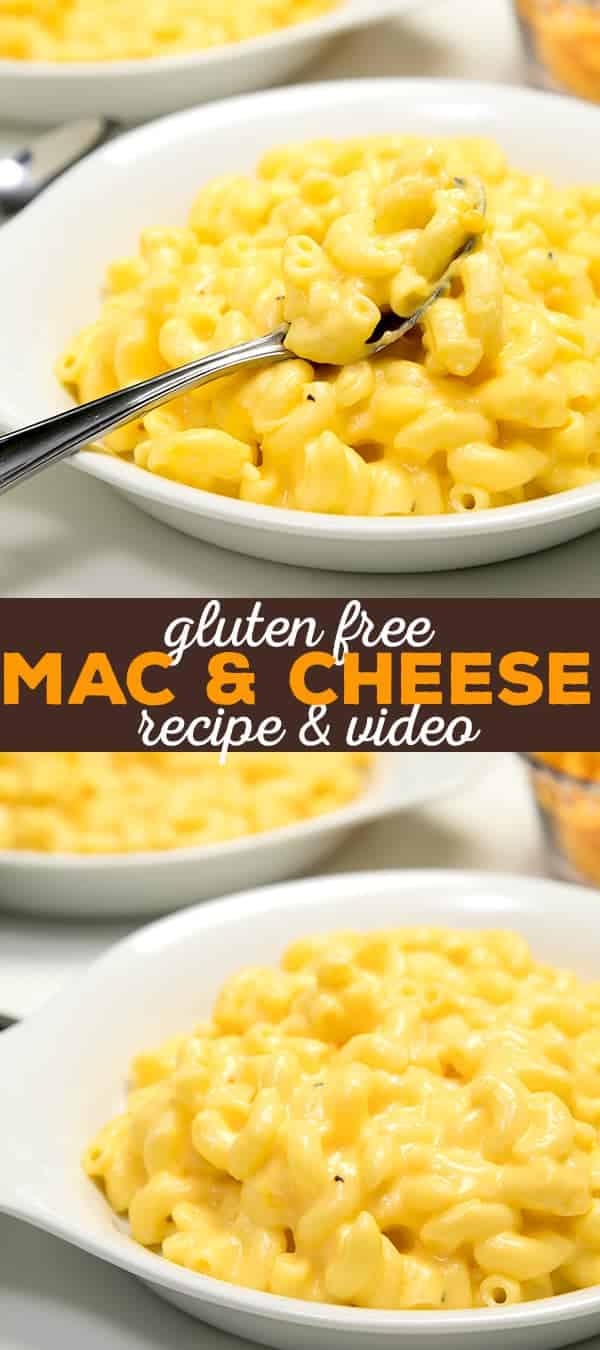
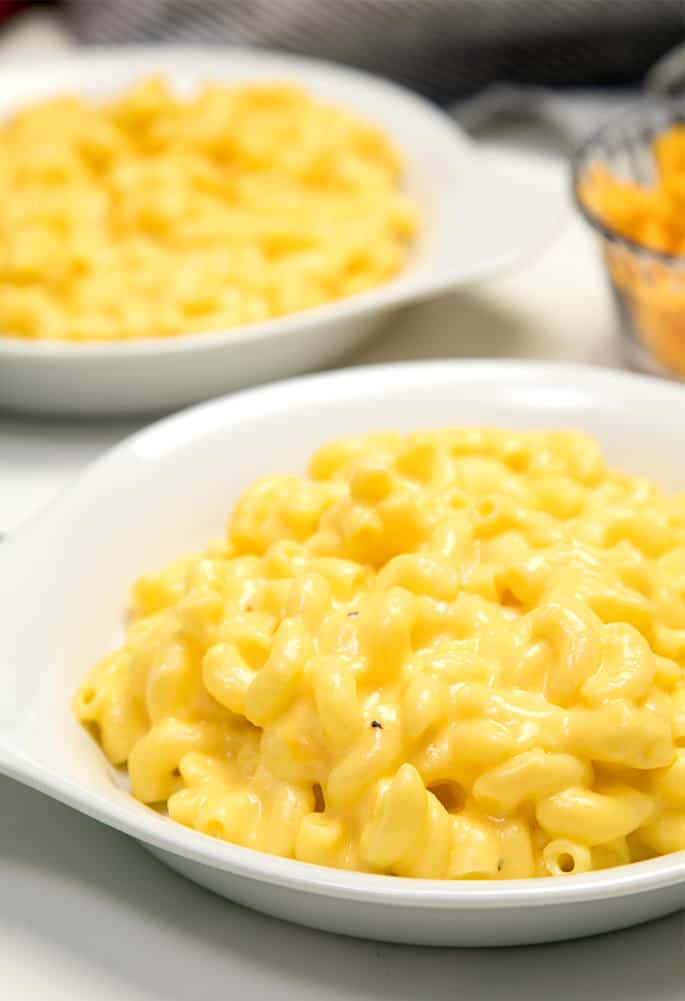
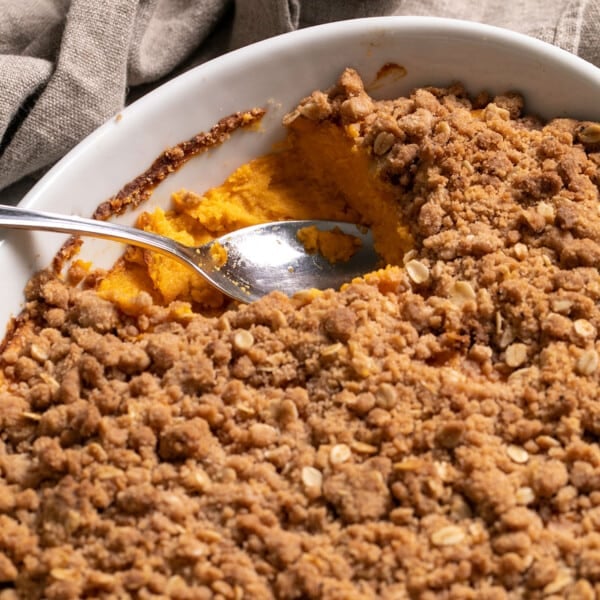
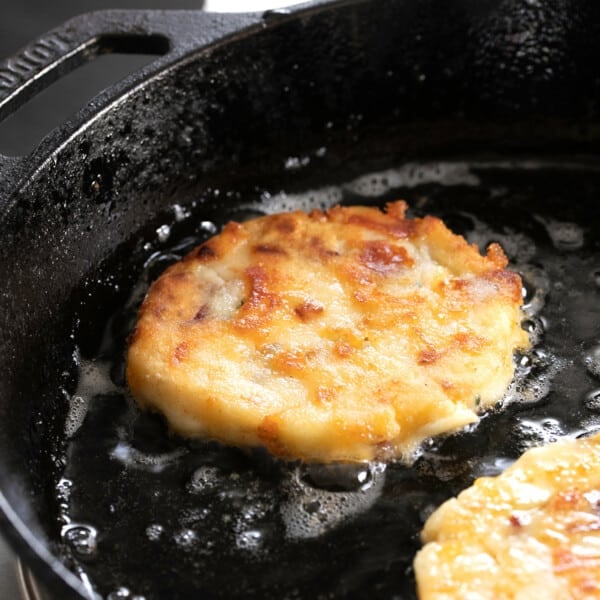
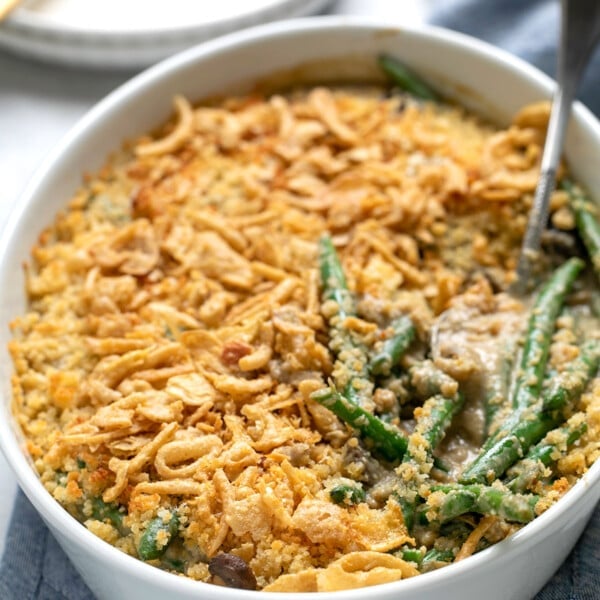
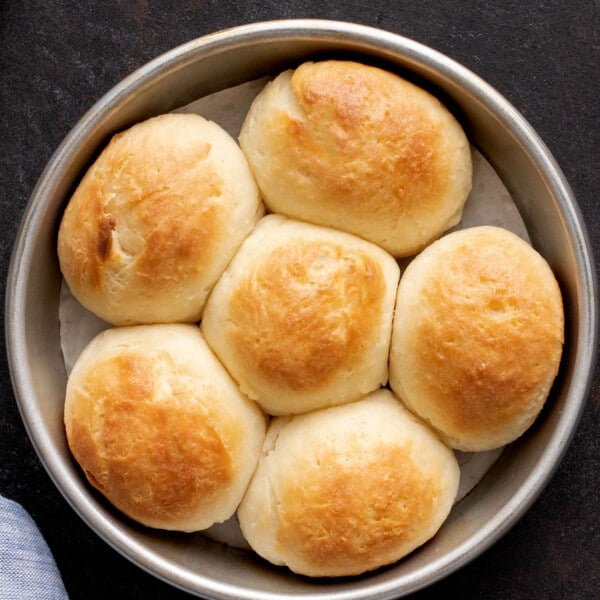









Can I use gluten free Bisquick for the flour?
Hi, Lisa, I’m afraid not. Bisquick is a pancake mix with additional ingredients like baking powder, which don’t belong in this recipe and won’t turn out right.
Nicole can I use almond milk and regular white rice flour or all tapioca starch?
You can use unsweetened almond milk in place of regular milk, but you’ll still need a dairy free evaporated milk. My local grocery store sells cans of evaporated dairy free coconut milk. I’d try that. About the flour blend, since you have both superfine white rice flour and tapioca starch, but I guess you don’t have potato starch, I’d replace the amount of potato starch with either cornstarch if you have it, or with more white rice flour, rather than doing all rice flour or all tapioca starch.
Hi. Looks great. Is there an alternative to evaporated milk? That’s HIGH on the FODMAP diet. Any suggestions? Lactose free half and half or heavy cream? Thanks
Hi, David, that’s an interesting question, one I haven’t been asked before, actually. I think you could use half and half in its place, yes. I think heavy cream would be too rich.
Why do you rinse the pasta? That has always been sacrilege in my family. Not only do we not rinse pasta or add fat to it (both of which diminish the pasta’s ability to hold on to the sauce), we retain the pasta water and use it in the sauce itself as needed for the perfect consistency. I made the sauce the pasta was on the stove so that when the pasta was done they were immediately combined. Worked great.
I find that gluten free pasta gets very very starchy and tend to stick together even after it’s coated in olive oil if I don’t first rinse it. Saving some pasta water is a great idea, but I find that gluten free pasta in particular behaves best if I rinse it first. It also tends to hold up better to reheating.
I have made this twice now – in my experience the recipe as written makes too much sauce for 12oz of pasta. Unless you like just a little pasta with your sauce. Last night I had a tad over 2 cups of extra cheese sauce. I guess we’ll have some cheesy broccoli this week! I have also made mac n cheese using the Hoosier Hill Farm cheese powder – it is by far the easiest method, but way too salty for me. However, if you reduce the milk and add sour cream to the sauce it will cut down the saltiness and make an extra creamy sauce. Try it!
I can’t print the recipes. It says to unlock print page enter email address. I did that, even though I already receive your emails.
Is there something wrong on my end? I’ve been able to print in the past. Am I doing something wrong? I probably am.🫤
Grow is a service that allows you to save your favorites on my blog and on any other blog that runs the same service, and it allows my advertising management company to serve you more relevant advertisements. You won’t receive any more emails, as you’re already on my email list.
I’m afraid there’s no way for me to customize the window that asks you to sign up for Grow to print, so I can’t explain up front that you won’t receive any additional emails from me or anyone else if you sign up.
If you don’t want to add your email to Grow, you are welcome to browse the website, but you won’t be able to print my recipes which I provide to you free of charge. Thanks for your understanding.
My rating is due to how difficult this recipe is to follow – I have the ingredients but haven’t yet made it.
For instance, what does this mean for one of the ingredients – (1 fluid ounces) 1/4 cup 2 fluid ounces milk. When you change the yield/servings, only the bracketed amounts change (in this case, 1 fluid ounce).
I bought a 5 pack of Rummo Elbows No. 160, which are sold in 12 ounce packaging. The notes in the recipe #3 above says to use four ounces of pasta. Is that for one serving… so I should then change the yield to 1? So if I want to use a package of pasta I should change the yield to 3? or if I want to make a pound I have to a package plus four ounces of pasta and change the yield to 4?
I’d respectfully suggest you split this recipe into three separate recipes, use the same intro, and link to each respective recipe. I have spent a ton of time trying to weed through this recipe. Sorry if this reads harshly – every other recipe I have used off your site I have really liked.
Mike, you’re actually right—except for your 1 star rating, which I believe isn’t appropriate. That rating system is meant for those who have actually made the recipe to rate it. However, I am in the process of separating this recipe into 3. And I think you should consider removing the 1 star, but I’ll leave it there for you to decide.
I don’t know hoe to change my rating, yet added a 5-star to this comment based on your prompt reply and willingness to separate the recipes for clarity. I look forward to seeing them.
Thank you, Mike. I’m on it!
The stove top version of this turned out really well. I used goat cheddar and lacking the cheese slices, I shredded some goat Colby-jack. This is a keeper recipe for me. Thanks!
So glad you enjoyed it, Sashie. Those cheeses sound like an amazing combination!
Can you please include grams for the ingredients? It’s really hard to adjust the ounces etc mid cook? Thanks
Rae, grams and ounces are both weight measurements. Ounces are used for larger measurements, as grams become impractical as there are a full 28 grams in each weighted ounce.
I have two devices that are helpful in these type of situations, 1) a kitchen scale that measures in ounces or grams. 2) I got an app for my cellphone that converts all kinds of measurements. It’s come in handy on several occasions and if you are in the middle of something, it’s super fast. Good luck.